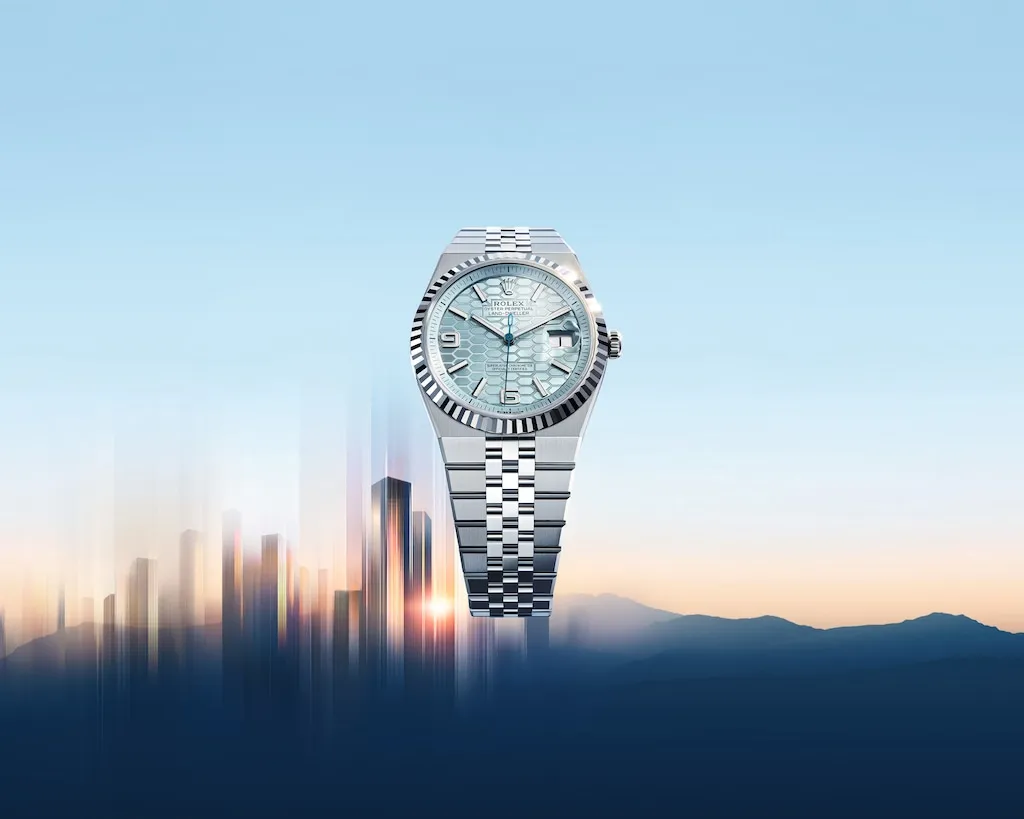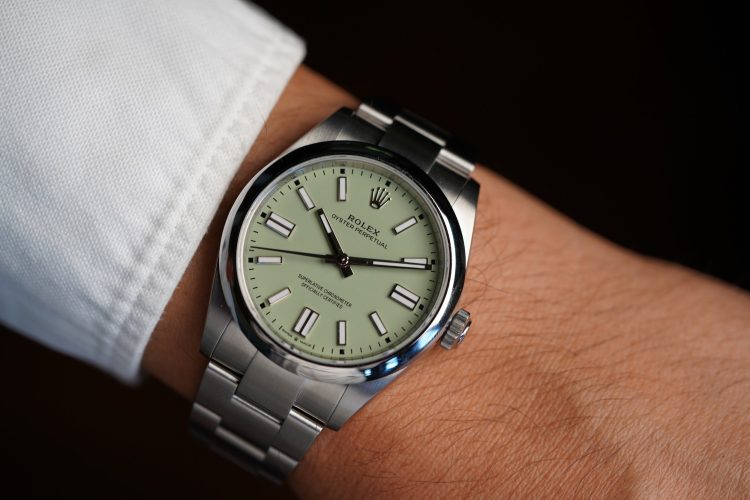In a surprising move that sent ripples through the watchmaking world, Rolex has officially banned the use of UV light cleaning across all its global service centers starting in 2025. Once considered a gold standard in precision cleaning—praised for its ability to sterilize and remove micro-debris without physical contact—UV cleaning has now fallen from grace in the world of haute horlogerie. But this is not merely a case of operational preference. Rolex’s decision stems from emerging scientific findings, internal testing, and a deeper understanding of how modern lubricants interact with light-based energy.
The implications reach far beyond Rolex. Several major luxury watch brands have quietly begun reassessing their own cleaning and servicing protocols in light of new research. What does this mean for collectors? For independent watchmakers? And what cleaning alternatives are stepping up to take UV’s place?
Let’s dive into the science, the industry shift, and the future of safe watch maintenance.
Scientific Findings About Lubricant Degradation
Ultraviolet cleaning was first adopted into high-end watch service practices for its effectiveness in sanitizing and removing microscopic particles. The method involves exposing watch parts to short-wave ultraviolet (UVC) light, which neutralizes biological contaminants and loosens dirt through photonic disruption. However, as mechanical movements became more complex and lubrication formulas more synthetic, unintended side effects started to emerge.
In a series of internal white papers Rolex conducted between 2021 and 2024—now partially leaked to industry insiders—the brand observed a consistent pattern: components exposed to UV light, particularly synthetic oils on pivots and escapements, exhibited accelerated oxidation, thinning, and in some cases, complete evaporation of lubrication within 6–12 months of service. Key findings include:
- Photochemical Reactions: Modern watch lubricants, particularly those using perfluoropolyether (PFPE) bases, are sensitive to high-energy photon bombardment. UV light breaks molecular bonds, leading to premature decomposition.
- Microscopic Cracking: Certain UV wavelengths induce surface-level heat microfractures on synthetic ruby and polymer components, compromising their long-term resilience.
- Chain-Reactive Drying: Even minor degradation of lubricants leads to a domino effect—drying at one pivot causes increased friction, heating up the movement and accelerating wear across the gear train.
The most troubling discovery came from post-service returns: watches that had passed pressure tests and timekeeping accuracy initially, only to return within 9 months with erratic amplitudes, excess wear, and visible lubricant thinning. This was enough for Rolex’s quality assurance division to sound the alarm.
New 2025 Service Protocols from Major Brands
Rolex isn’t alone in pivoting away from UV. Following its policy announcement in early 2025, other leading brands began to update their internal guidelines:
- Omega has now classified UV sterilization as “conditionally banned,” restricting its use to non-movement components like bracelets and cases, and only with shielding of gaskets and seals.
- Patek Philippe has returned to ultrasonic cleaning with updated detergent-free solutions and temperature-controlled protocols.
- Audemars Piguet has shifted toward dry micro-particle blasting combined with CO₂ pellet cleaning for specific components such as balance wheels and hairsprings.
- Grand Seiko has even introduced a hybrid approach: low-pressure ionized air with electrostatic filtration to remove dust without any solvent or light exposure.
These service updates highlight a broader industry shift: the re-centering of longevity over speed. The old “get it sparkling clean” mindset is being replaced by a nuanced philosophy—one that prioritizes the invisible life of a lubricant as much as the gleam of polished gold.
Five Alternative Cleaning Methods That Are Safer
If UV is out, what replaces it? Leading manufacturers and independent watchmakers are now returning to a toolkit of older, slower, but far safer cleaning technologies. Each offers unique benefits while protecting sensitive lubricants and micro-components.

- Ultrasonic Cleaning with pH-Neutral Fluids
Ultrasonic tanks remain a staple in watch workshops, but the key change is in the chemistry. New pH-neutral, non-ionic solutions prevent etching and lubricant residue breakdown. Frequency and temperature are also tightly controlled—too much cavitation can strip oils, while too little leaves behind debris. - CO₂ Snow Jet Cleaning
A modern marvel borrowed from aerospace manufacturing, CO₂ cleaning uses compressed carbon dioxide pellets or snow to physically dislodge particles. The process leaves no residue and maintains room temperature, reducing thermal stress on fragile parts. - Manual Pegwood Detailing
The most traditional and least invasive method—using sharpened pegwood sticks to gently clean jewels and pivots—has made a full comeback. Though time-consuming, it preserves the integrity of lubricated surfaces and offers a human-level precision unmatched by machines. - Ionized Air Blasting
Used for removing static-charged microdust particles without physical or thermal contact. This method is especially useful in chronograph calibers and tourbillon assemblies, where dust can travel deep into escapements. Air is filtered and ionized to neutralize charge and repel recontamination. - Cryogenic Steam Cleaning
This technique uses high-pressure, low-moisture vapor infused with trace alcohols to lift oil-bonded grime. Unlike traditional steam, this method operates below the temperature threshold that would disturb modern lubricants. Currently used by Jaeger-LeCoultre and Breguet for final stage finishing.
Together, these five methods represent a mosaic of old and new, mechanical and molecular. They prove that in the realm of watchmaking, innovation often circles back to the cautious precision that defined the craft centuries ago.
Why Rolex’s Decision Sets an Industry Benchmark
When Rolex acts, others follow. The brand’s scale and consistency make it a de facto regulator in an otherwise decentralized industry. While some independents will continue using UV for cases and bracelets, its role in servicing mechanical parts is likely permanently diminished.
Rolex’s 2025 directive does more than just protect its product—it sets a new expectation for what “proper” servicing means. Watch owners will increasingly question their local service centers about methodology, materials, and cleaning exposure. A shift in vocabulary is already underway: customers now ask about preservation over restoration, compatibility over efficacy, and invisible service over cosmetic perfection.
Independent watchmakers, too, may feel pressure to clarify their own practices. Transparency around cleaning and lubrication now joins finishing techniques and movement provenance as points of collector interest.
The Hidden Implications for Collectors
For collectors, the discontinuation of UV isn’t just technical—it’s philosophical. Watches, especially high-end mechanical ones, are living machines. Their value lies in their ability to remain functional for decades, sometimes centuries. Any procedure that risks shortening that timeline—even in the name of sterility or shine—is now under scrutiny.
This trend toward care-based servicing could reshape the secondhand and vintage market as well. A watch with verifiable non-UV servicing may command a higher premium due to greater lubricant integrity and reduced micro-damage.
In a twist of irony, the very technology once introduced to modernize watch servicing is now being retired in favor of older, slower, and more human-centric methods. The pendulum has swung back—not toward nostalgia, but toward preservation.
Conclusion
Rolex’s decision to ban UV light cleaning represents a new chapter in horological care—one that emphasizes scientific rigor, invisible longevity, and respect for the molecular intricacies of modern lubricants. In a world where watch collectors are more informed, and mechanical watches are expected to last generations, this shift underscores a broader truth: sometimes, the best way to move forward is to turn down the light and look more closely at what lies within.





































